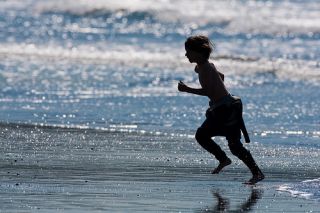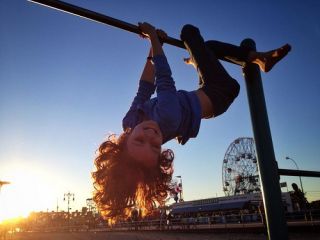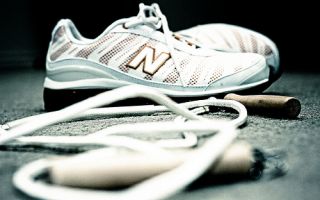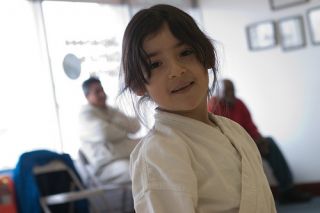Autism
Autism and Exercise
The positive effects of exercise for autistic people.
Posted March 9, 2014

Picture via Mike Baird (http://www.flickr.com/photos/mikebaird)
I’ve spent years now trying to deconstruct why certain experiences and environments growing up affected me the way they did, pro and con. Physical activity has come up again and again in those analyses, but I could never pinpoint exactly why. Then, I read a post on the subject by Shannon Des Roches Rosa.
Shannon wrote: “Autistic adults cite exercise as critical for self-regulation and helping to process their environment, exercise can provide social opportunities with less emphasis on verbal interactions, exercise can help moderate some medication side effects, and exercise can help moderate autistic kids' greater and earlier tendency towards obesity." It was the first time I heard someone speak so specifically about the regulatory benefits of exercise, but yet it resonated very strongly with my experience.
I don’t know if the people around me when I was growing up made this connection so explicitly, but it would seem that they understood it at some level. When I think about my early years, activity is one constant – and when I think of the environments where meltdowns were kept at a minimum, they were environments where opportunities for appropriate exercise were prevalent. What do I mean by “appropriate exercise”? Well, I’m sure that varies a bit based on the individual.
For me, the activities that were most effective were activities that catered to my sensory issues. I was, in a lot of instances, a “sensory seeker.” I loved to climb, swing, and spin. But I did very poorly at activities that are the staple of many physical education programs – things that required the ability to track multiple moving objects and people at one time. I did not have the combination of proprioceptive and spatial skills to carry out those tasks, and it often led to humiliation. Playing team sports like football or baseball, often resulted in my colliding with others, or tripping and rolling down the field, as if I were the ball itself.

Picture via Edenpictures (http://www.flickr.com/photos/edenpictures/)
On the other hand, there were many activities which I enjoyed and worked well for me. Climbing and hanging on the jungle gym. Swinging on regular or rope swings. Climbing over rocks at the beach, or over logs in the forest. Hiking. Riding bikes. Games of Four Square or Nation Ball. Swimming. Jumping on a mini-trampoline. Practicing martial arts, like Aikido. These types of activities often fed my sensory needs – vestibular, proprioceptive, or some combination thereof, and were constructed so that my spatial issues were less of an issue.
In Shannon’s post she mentions how important it is for parents to be vigilant when it comes to the inclusiveness of their school’s physical education programs. She writes: “…even the best-intentioned administrators and P.E. staff do not necessarily understand how to best support disabled students' exercise needs.” This is sad, given how simple it can be to modify activity for someone with different physical and sensory needs. For example, when I was in early grade school, jump rope was something I loved. At my day care center, I could spend hours doing this, alone or in parallel with my peers.
When I was older and worked on a fitness regime for myself, I thought about these early experiences. Many people include jumping rope into a fitness regime, and it has lot of physical benefits – if it was something I knew and loved previously, why wouldn’t it work now? Well, it didn’t. I didn’t understand why for years, until I began reading about sensory issues in autism – then it came very clear.

Picture via J Devaun (http://www.flickr.com/photos/34316967@N04/)
When I’d attempted to pick up the exercise in later life, I bought pre-made jump ropes made for the fitness market. They were a step up from the jump ropes I’d had as a child. They had cool features, such as ball bearings in the handles that facilitated the spin of the rope and made it possible for it to swing very quickly. But, as it turned out, that was an issue. The rope spun too easily. There was no resistance. Pair that with a rope that weighed very little, and it meant very little proprioceptive feedback. Given that I already had issues in that area, the result was that I could not tell where the rope was in its swing without looking. It felt like I was attempting to swing air.
What was the crucial difference in the early years? The proprietors of my day care were heavily into sailing, and the jump ropes they provided for us were homemade from pieces of the heavy maritime rope often used in sailing – the kind one might use to tie a boat to a dock. The additional weight not only made for a better workout, but upped the proprioceptive feedback to such an extent that it not only allowed me to feel where the rope was in space, but served as a sensory regulation function, much as deep pressure often did for me. This was why I loved it so much.
Looking back on those years, I see how small modifications like that (whether intentional or unintentional), often made the difference between a physical activity that I could do and enjoy, versus one that I couldn’t. Likewise, the willingness of adults (and peers) around me to consider modifying existing activities, or offer a wider variety of activities made a huge difference. I am fortunate to have had quite a few of these in my early grade school years, especially considering later experiences in my schooling with more rigid, non-inclusive physical education programs.
Contrasting the two, I can see how an autistic person subjected to such program their entire school career would come to associate physical activity with nothing but negativity. I was lucky in that through my early experiences I learned to view physical activity as a good thing, and developed a knowledge of which ones worked for me and which didn’t. This meant that when my self-regulation needs were not met in my standard physical education class, I could seek out activities that worked on my own.But should I have had to?

Picture via Julieta Alvarez (http://www.flickr.com/photos/soaringbird/)
Physical activity was one of the cornerstones of the program I went to from Kindergarten to Third Grade. I think the proprietors who designed the program were onto something. As I connect with more and more autistic adults, I hear stories of how physical activity has helped them. Whether it’s coming home and jumping on a trampoline, or just taking a walk. And some have become educators in this area – such as Nick Walker, whose background as an Aikido instructor (at the dojo he founded, Aikido Shusekai) and as a psychologist gives him great insight into the ways in which practices like Aikido can help autistic people, both physically and psychologically.
As we work on building more inclusive communities and schools, it’s important to ensure inclusiveness in physical education and recreational activities. As many of us have experienced, consistent physical activity, which is appropriate to the unique sensory and physical needs of the individual, can have great impact on our quality of life. It shouldn’t be overlooked.
For updates you can follow me on Facebook or Twitter. Feedback? E-mail me.
My book, Living Independently on the Autism Spectrum, is currently available at most major retailers, including Books-A-Million, Chapters/Indigo (Canada), Barnes and Noble, and Amazon.
To read what others have to say about the book, visit my web site: www.lynnesoraya.com.
RELATED RESOURCES:
- Building a Culture of Empathy: Aikido & Empathy (an Interview with Nick Walker)
Nick Walker and Edwin Rutsch talk about Aikido, and its connections to empathy.
- Cynthia Kim: Sensory Seeking
Autistic adult Cynthia Kim discusses sensory seeking, how it feels, and how it can be observed. - Autism Exercise Topics: Proprioception and Sensory
Proprioception and sensory are widely discussed topics in Autism literature, and understanding the implication on physical activity can be immediately actionable for getting our kids to exercise more effectively. Proprioception is essentially our body sensing and working with the world around us. - Autism-Help.org: Physical Exercise and Autism
Despite its many benefits, exercise is often overlooked by parents due to their own inactive lifestyle or being too busy. But when physical exercise is cheap, safe, and healthy, it should be one of the first interventions for a child on the autism spectrum. Motivating your child may be difficult at first, and you may need to shape the exercise around an interest they have. Once it forms part of the child's routine, motivation is usually no longer a problem.




